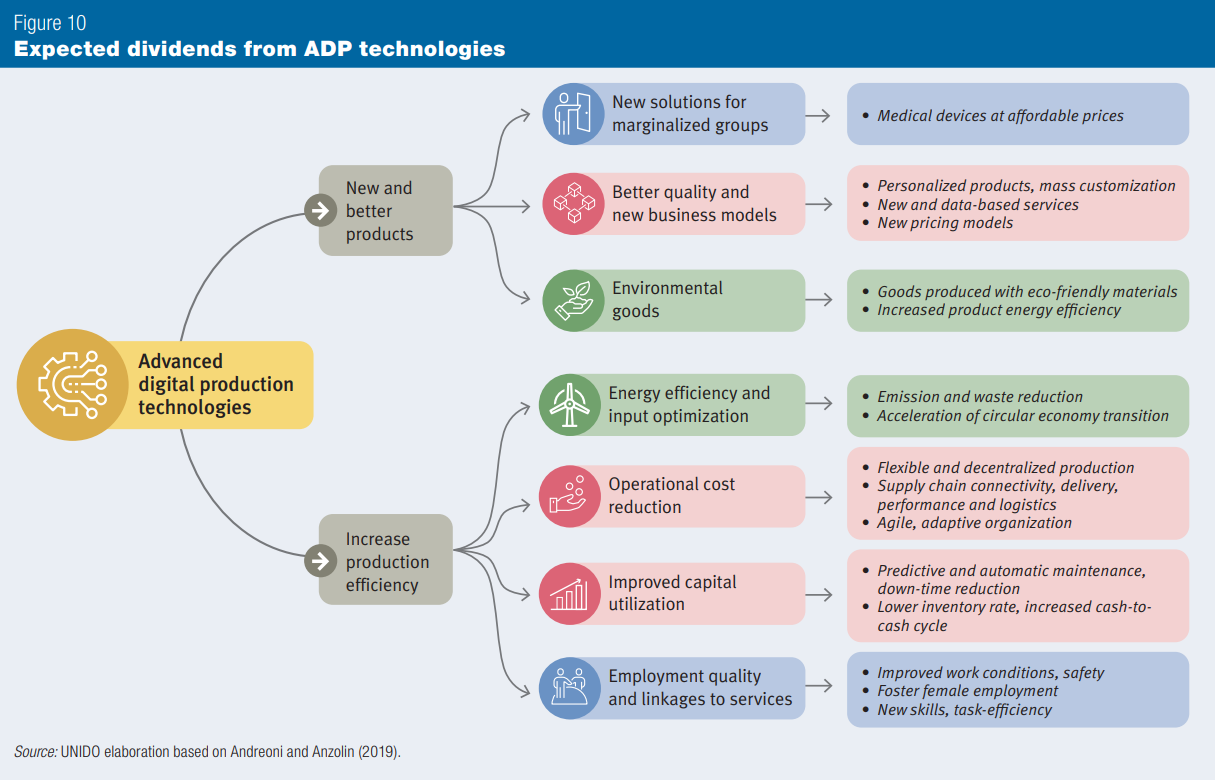

Fourth Industrial Revolution: how latecomers and laggards can catch up
05 February 2020 Charles ARTHUR

Just ten countries account for 90% of all global patents, and 70% of all exports, directly associated with the advanced digital production (ADP) technologies that are driving the Fourth Industrial Revolution. Another 40 are actively engaging in these technologies, but the rest of the world remains largely excluded from technological breakthroughs such as artificial intelligence, big data analytics, cloud computing, the Internet of Things (IoT), advanced robotics and additive manufacturing.
The ten economies showing above-average market shares in the global patenting of ADP technologies are, in order of their shares: the United States, Japan, Germany, China, Taiwan Province of China, France, Switzerland, the United Kingdom, the Republic of Korea and the Netherlands.
Other countries producing or using these new technologies, although to a much more modest extent, include Israel, Italy, Sweden, Austria, Canada, Mexico, Thailand and Turkey.
Most developing countries are not involved, however - and this is a problem, according to a new report by the United Nations Industrial Development Organization (UNIDO). Industrializing in the digital age, UNIDO’s Industrial Development Report 2020, argues that these new technologies are at the core of successful inclusive and sustainable industrial development.
They enable the creation of new goods and product innovations, which lead to the emergence of new industries – and the jobs and incomes that come with them. When these innovations are geared to reducing environmental impacts - by introducing green manufacturing - they also promote the environmental sustainability of industrial processes.
New technologies can also increase production efficiency, leading in turn to sustained industrial competitiveness and expanding manufacturing production. Greater efficiency is also associated with reductions in pollutant emissions and material and energy consumption per unit of production, which can improve the environmental sustainability of the process.
According to the UNIDO report, in large parts of the world, especially on the African continent, countries are not producing or importing in any significant amount the most representative goods within the realm of ADP technologies.
Even among countries with some activity in ADP technologies, a large number are importing the capital goods associated with these technologies, with very little or no domestic innovation and exporting activity. This means that their prospects for moving up the technological ladder are limited.
UNIDO is calling for immediate action from the international community to support developing countries - especially the least developed countries - in adopting ADP technological breakthroughs. Without international support, low-income countries run the risk of lagging further behind and failing to achieve the Sustainable Development Goals.

Developing countries face a range of challenges in engaging with the new technologies:
· Many lack the basic production capabilities for absorbing, deploying and diffusing ADP technologies along supply chains.
· Companies in developing countries that could make technology investments in this area have already committed resources to older technologies, and they need to learn how to retrofit and integrate the new ADP technologies into their production plants.
· ADP technologies demand substantial infrastructure for their use in production. Some developing countries face significant challenges in providing affordable and high-quality electricity as well as reliable connectivity.
· In developing countries where companies are engaging with some ADP technologies, many of these technologies remain contained within the company and occasionally a few close suppliers who have the production capabilities to use them. The vast majority of firms still use technologies typical of the Third or even Second Industrial Revolution. In this context, it is extremely difficult for a leading company to link backwards and nurture its supply chain.
Taken together, these challenges point in one direction: the need to build basic industrial production capabilities as a prerequisite for joining the Fourth Industrial Revolution. The latecomers and laggards can only catch up with support oriented towards building basic, intermediate and advanced industrial and technological capabilities, together with digital infrastructure.